The 95 Berkeley Street Project is a renovation
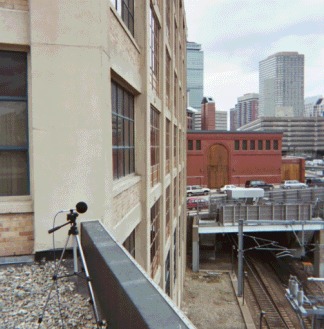 project of an extensive building complex that directly abuts the MBTA commuter rail, Orange Line, and the Mass Turnpike in Boston. The renovation will include additional stories and upscale residential units. In addition, a parking garage will cover certain portions of the Mass Turnpike and MBTA's Commuter Rail and Orange Line.
project of an extensive building complex that directly abuts the MBTA commuter rail, Orange Line, and the Mass Turnpike in Boston. The renovation will include additional stories and upscale residential units. In addition, a parking garage will cover certain portions of the Mass Turnpike and MBTA's Commuter Rail and Orange Line. DCC was asked to 1) determine existing noise levels due to the nearby Mass Turnpike, and MBTA Orange Line and Commuter Rail Lines, 2) model future noise levels due to changes in the building and surrounding buildings/structures, 3) compare future noise levels with relevant criteria, and 4) determine the feasibility of mitigation to reduce noise to acceptable levels.
Noise Measurements
DCC measured noise on the roof of the building to acquire frequency spectra and relative contributions of noise from the three separate noise sources (highway, commuter rail, and transit) and to determine the Day Night Average Noise Level (DNL). The DNL is essentially a 24-hour average noise level with a 10-decibel nighttime penalty that accounts for people's increased sensitivity to noise at night.
Figure 1 shows the frequency spectra associated with these different noise sources. This data will be required for the noise mitigation design.
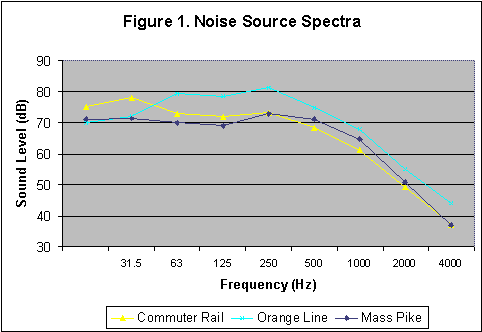
The Commuter Rail vehicles produce low-frequency noise in the 31 Hz range that can be more difficult to attenuate than mid- or high frequency noise. The highway noise peaks in the mid-frequencies, and the Orange Line vehicles produce more low-frequency noise than the highway vehicles, but less than the Commuter Rail vehicles. An important finding of the noise measurements is that Orange Line noise dominates the noise environment.
Noise Modeling
DCC employed three-dimensional acoustic analysis software to generate noise contours for existing and future conditions. This analysis technique allows determination of the noise exposure around the building in plan view as well as vertically. This step is very important in the design of this building since variations in noise level could result in different treatments (and different costs) at various parts of the building.
Structures and the three separate noise sources acoustically important were input into the model. Each rail track and westbound and eastbound lanes of the Turnpike were modeled separately. The noise level measured at the roof position was used to calibrate the model. Figure 2 shows the results of the model for existing conditions.
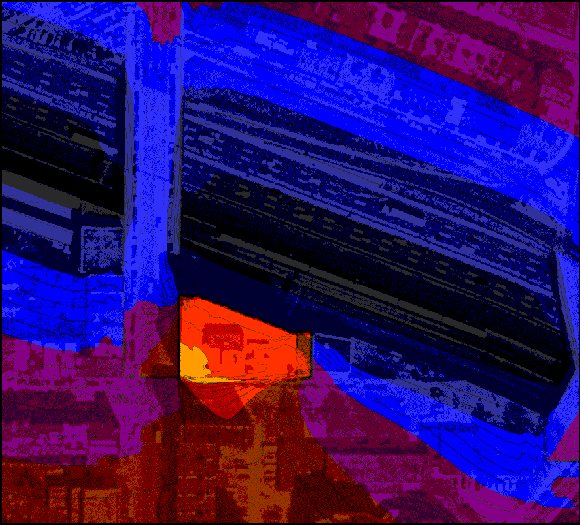
Figure 2. Noise Contours- Existing Conditions
Each color band of noise contours represents a 5 dB range, thus each line represent a 1 dB increment. The light blue band is the 75 -80 DNL range. This particular contour plot is at a 10-m elevation to show the shielding effects of the bridge structures and retaining walls-noise contours can be generated at any elevation. This Figure shows that essentially all areas of the building are currently exposed to 65 DNL or greater, except at a small portion of the building facing Chandler Street.
Figure 3 shows a schematic plan view of the proposed building, the parking garage over the Mass Turnpike, as well as other proposed structures that would provide some acoustic shielding.
Figure 4 shows the noise contours (at 10 m elevation) for the future un-mitigated condition. This Figure reveals some important findings:
1. Since the Orange Line noise dominates the noise environment, the shielding effects of the parking garage will not significantly reduce overall noise at 95 Berkeley Street.
2. The increased height and extent of the building improves the barrier effect of the building and reduces the need for treatments on the Chandler Street side.
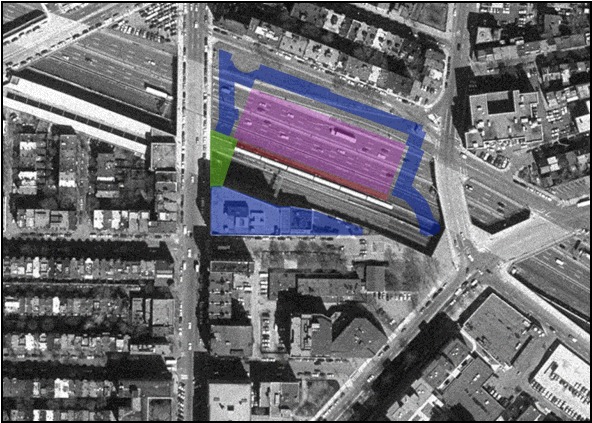
Figure 3. Proposed Future Structures
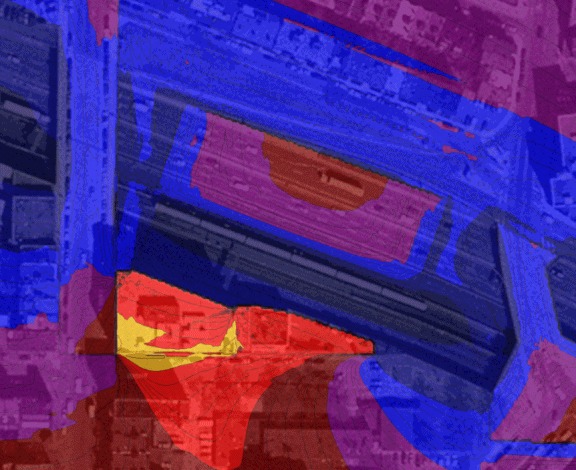
Figure 4. Noise Contours- Future Un-mitigated Condition
Mitigation
Noise mitigation for this project theoretically could take on a number of possible forms. For example, mitigation options could include noise barriers, building sound insulation (acoustical replacement windows), concrete decks or platforms that would cover the open track areas, and train source noise reduction efforts (e.g. wheel/rail maintenance). The most practical options include noise barriers and building sound insulation. These options are discussed below:
Noise Barriers
DCC analyzed a few noise barrier options and found generally that barriers will be infeasible for this project. Figure 5 shows a cross section of the proposed building, tracks, and the Mass Turnpike with no barrier and Figure 6 shows the same cross section with a 4.5 m high (3 m above track elevation) barrier positioned directly adjacent to Orange Line track 4. This barrier would provide some shielding of Orange Line noise for floors where the top of the barrier would block line-of-sight to the train wheels. However, this barrier would only provide 3 dBA of reduction at an elevation of 19 m (78 DNL vs. 81 DNL with no barrier). The barrier itself would attenuate Orange Line noise with reasonable efficiency, however noise from the Commuter rail and Orange Line noise 'spillage' would limit the reduction that this barrier would provide. Therefore, noise barriers would likely be required beside each rail and the effectiveness of this option would be limited to a certain floor elevation.
The model provides quantitative noise data at each floor for determination of the amount of required mitigation.
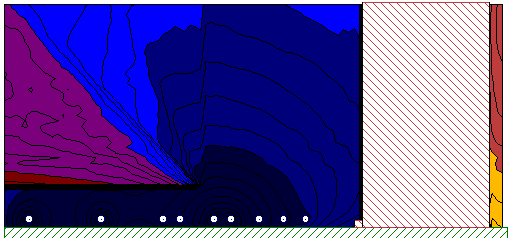
Figure 5. Proposed Building Cross-Section Noise Contours-No Barrier

Figure 6. Proposed Building Cross-Section Noise Contours with Barrier
Inspection of Figure 6 shows that continuation of the parking garage deck across the entire opening would virtually eliminate the noise problem. In order to have adequate sound isolation, the structure would need to have some mass. That is, a lightweight fabric would provide little or no attenuation, but a structure such as the parking garage would provide more than enough mass. The performance would also be related to the extent to which the opening was closed.
Building Sound Insulation
Building sound insulation generally refers to replacement acoustical windows and doors, but in the context of this project, corridors placed between the exterior and living spaces could provide significant sound isolation. Window treatments in the Sound Transmission Class (STC) 50 range would reduce exterior noise to the NC 25-35 range. Therefore, window treatments are a feasible mitigation measure for this project and a corridor serving as a deep airspace could potentially provide even more noise reduction.